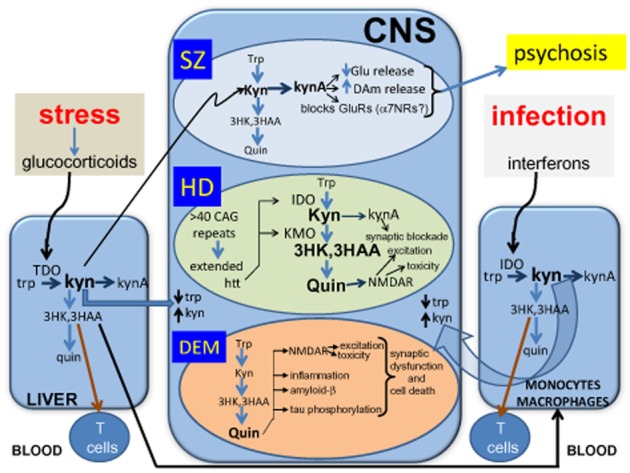Figure 2.

A summary of the involvement of kynurenines in three groups of CNS cognitive disorders: (A) schizophrenia and related conditions such as autism spectrum disorders (SZ), (B) Huntington's disease (HD) and (C) dementias such as HIV-Associated Neurocognitive Disorders (HAND), with probable relevance to conditions such as Alzheimer's disease. The diagram also illustrates the influences of stress on the kynurenine pathway via the induction of glucocorticoid secretion which induces TDO in the liver, and infections which cause the induction of IDO in several subsets of leucocytes via the action of interferons. The activation of IDO or TDO can produce localized depletion of tryptophan from proliferating cells while increasing the concentrations of kynurenine and its metabolites in tissues. Some of these metabolites such as kynurenic acid and quinolinic acid are active primarily on neuronal function, while 3HK and 3HAA have their main effects on T cell proliferation and cytokine secretion.
α7NRs, α7-nicotinic cholinoceptors; 3HAA, 3-hydroxyanthranilic acid; 3HK, 3-hydroxykynurenine; DAm, dopamine; Glu, glutamate; Htt, huntingtin; IDO, indoleamine-2,3-dioxygenase; Kyn, kynurenine; Kyna, kynurenic acid; Quin, quinolinic acid; TDO, tryptophan-2,3-dioxygenase; Trp, tryptophan.
